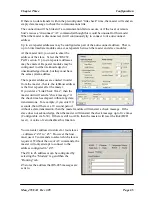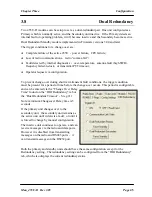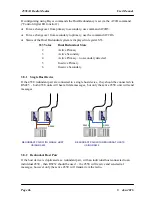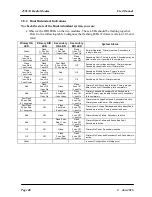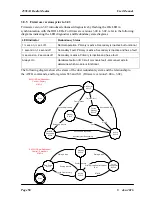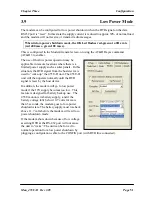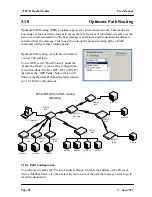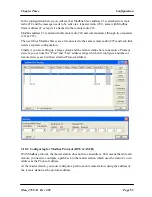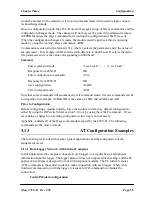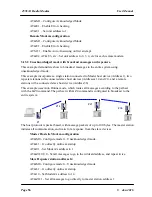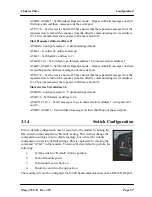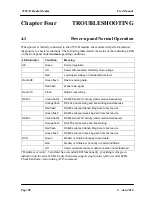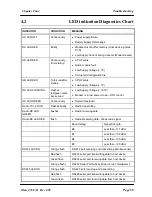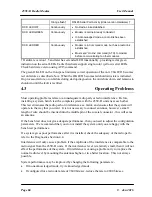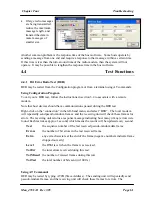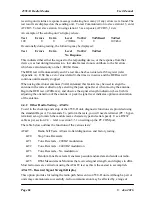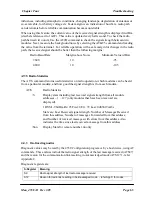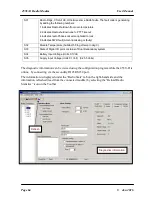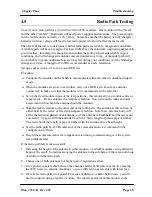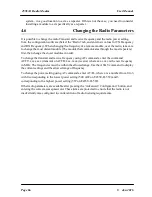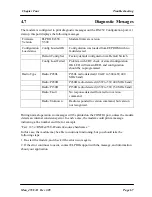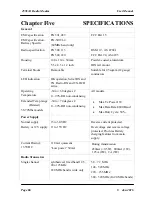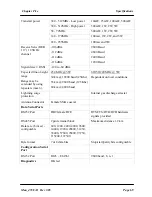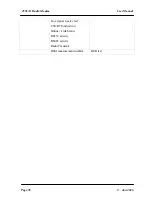
Chapter Three
Configuration
Man_455U-D Rev 3.05
Page
55
would be normal for the modem to start up in command mode when used in single-connect
Acknowledged mode.
Once in configuration mode, the 455U-D unit will accept a string of Hayes commands, and the
configuration changes made. The changes will not however be stored in permanent memory
(EEPROM) unless the Hayes command for recording the configuration (AT&W) is sent.
When the configuration changes are made, the module must be put back into its operating
mode by using the “online” Hayes command,
ATO
Commands are entered in the format ATxy, where x selects the parameter, and y the value of
the parameter. For example, ATB2 sets the radio data rate to 4800 baud. B selects the radio
rate parameter and 2 is the value corresponding to 4800 baud.
Summary
Enter command mode
<1sec break> + + + <1 sec break>
Response from 455U-D
OK
Enter configuration commands
ATxy
Response from 455U-D
OK
Save configuration
AT&W
Exit command mode
ATO
Note that some commands will automatically exit command mode. Several commands can be
run together, for example, ATB2&WO is the same as ATB2 and AT&W and ATO
Prior to Configuration
Before configuring a module initially, force the module to its factory default configuration -
either by using the DIP switch (refer section 3.10), or by using the AT&F command. If you
are making a change to an existing configuration, this step is not necessary.
Appendix A details all of the Hayes commands accepted by the 455U-D. The following
commands are the most common.
3.13
AT Configuration Examples
The following section describes some typical applications and the configuration of the
modems involved.
3.13.1 Data Logger Network with Central Computer
In this application, the computer connects to each logger on a regular basis, and uploads
information from the logger. The logger protocol does not support error checking, and the PC
application software is designed to work with telephone modems. The PC software issues
ATD commands to the central modem to make connection with each logger. When it has
finished communicating with the logger, it issues an ATH command to terminate the
connection.
Central Modem configuration



